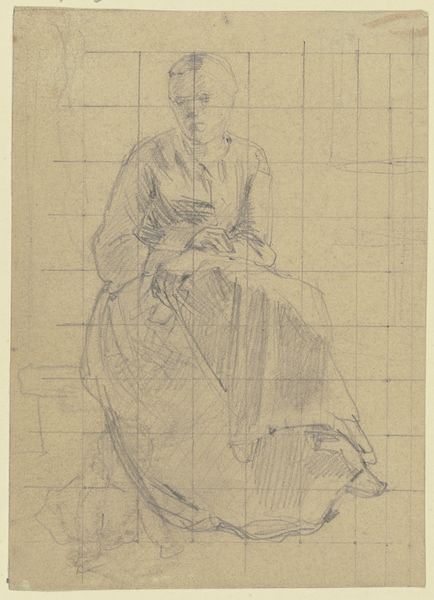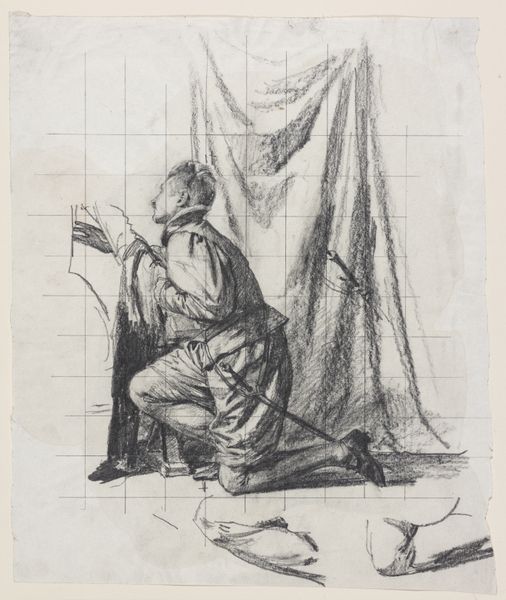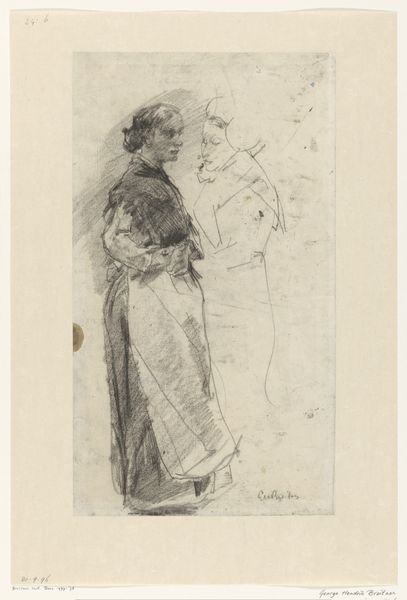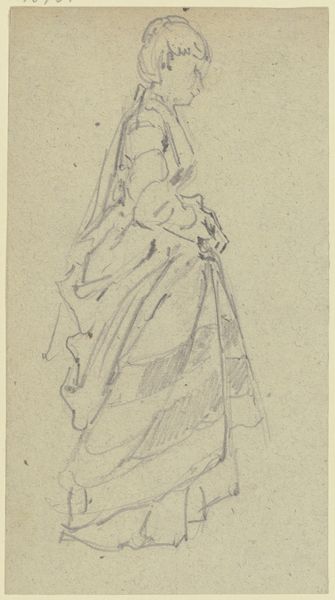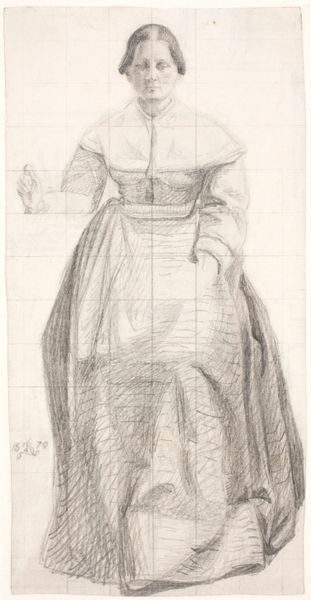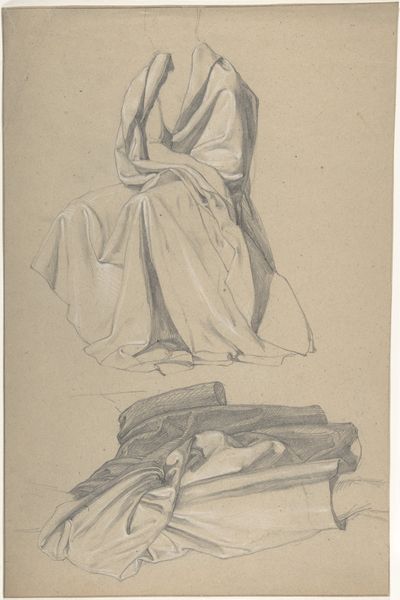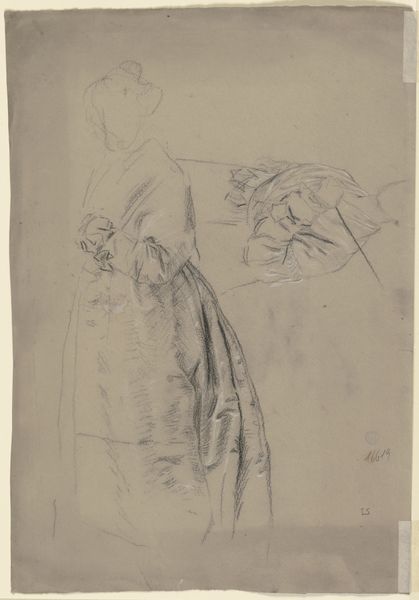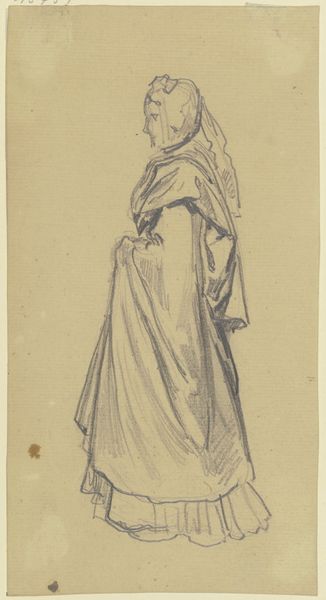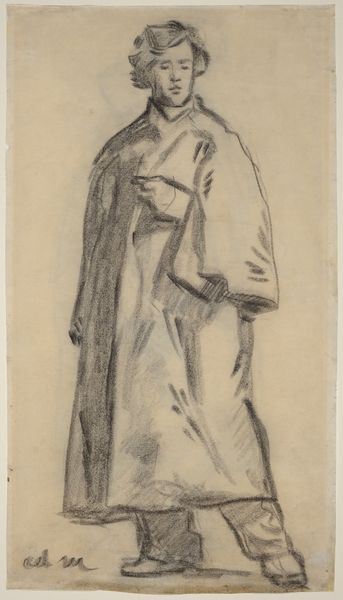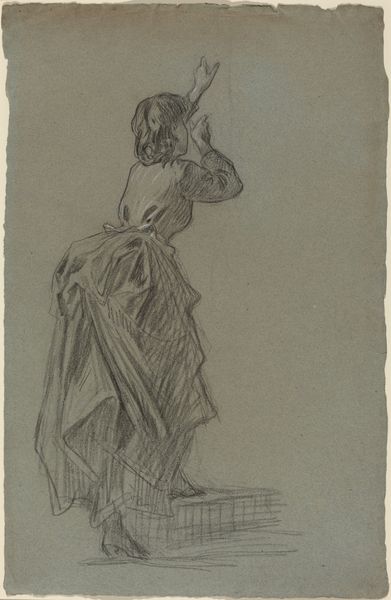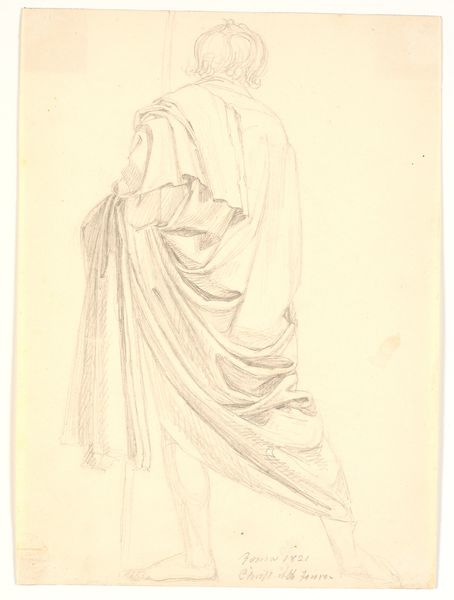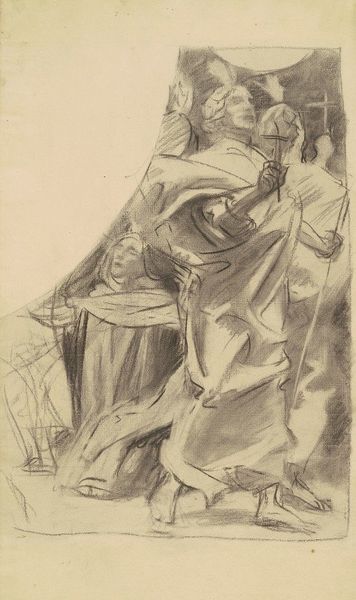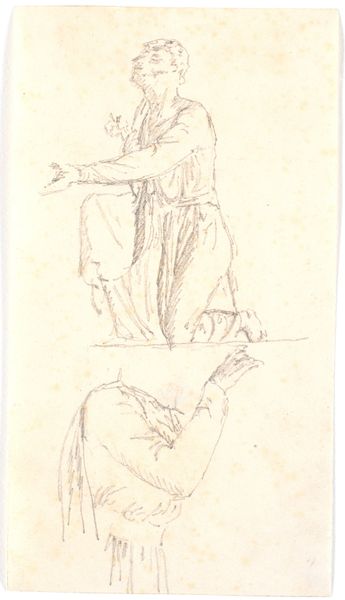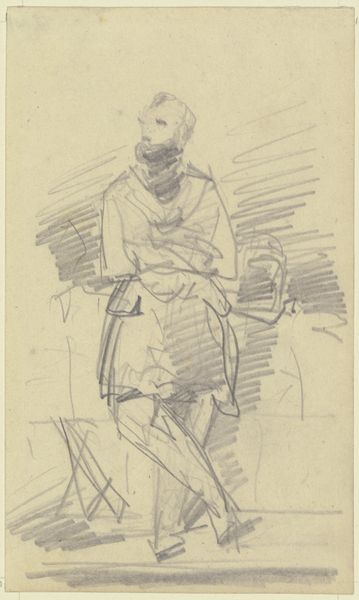
drawing, pencil, graphite
#
portrait
#
drawing
#
figuration
#
pencil
#
graphite
#
history-painting
#
academic-art
Dimensions: 299 mm (height) x 213 mm (width) (bladmaal)
Editor: This is Carl Bloch’s "Draft for the etching 'The Young Man and Death'," dating from around 1780-1880, made with graphite and pencil. The way the artist has used the grid lines almost makes the figure seem trapped. What symbols are at play here, literally or metaphorically? Curator: Indeed, the grid itself is a potent symbol! It could signify the confines of mortality, the structures - societal or psychological - that shape our understanding of death. Notice how the figure’s face is half-hidden, merging with the background, while her elaborate dress implies a lived life. Is she embracing death, or recoiling? Editor: I see what you mean; the dress makes me think about life being rich, and perhaps slipping away. I'm just wondering if the curtain backdrop plays any role here? Curator: Absolutely. Curtains often represent a veil between worlds. The curtain being pulled back may symbolize a revelation or unveiling of truth about the mortal coil. Do you get any hints from the position of the subject’s hands and gaze? Editor: It’s like she's hiding and looking, all at the same time. The rose seems too small to hide behind; I am wondering if the act is just a habit. What does it say if one cannot even trust such an icon to mean anything? Curator: An interesting paradox. Perhaps Bloch intended to critique the conventional symbolic language of his time. What does this tell us about our modern interpretations? Has meaning shifted? Do we now ascribe more significance to gesture and expression than prescribed iconography? Editor: So much to consider in what initially appeared to be a simple drawing! Thanks. Curator: My pleasure. Symbols evolve, just as we do, and that interplay is where meaning truly resides.
Comments
No comments
Be the first to comment and join the conversation on the ultimate creative platform.
